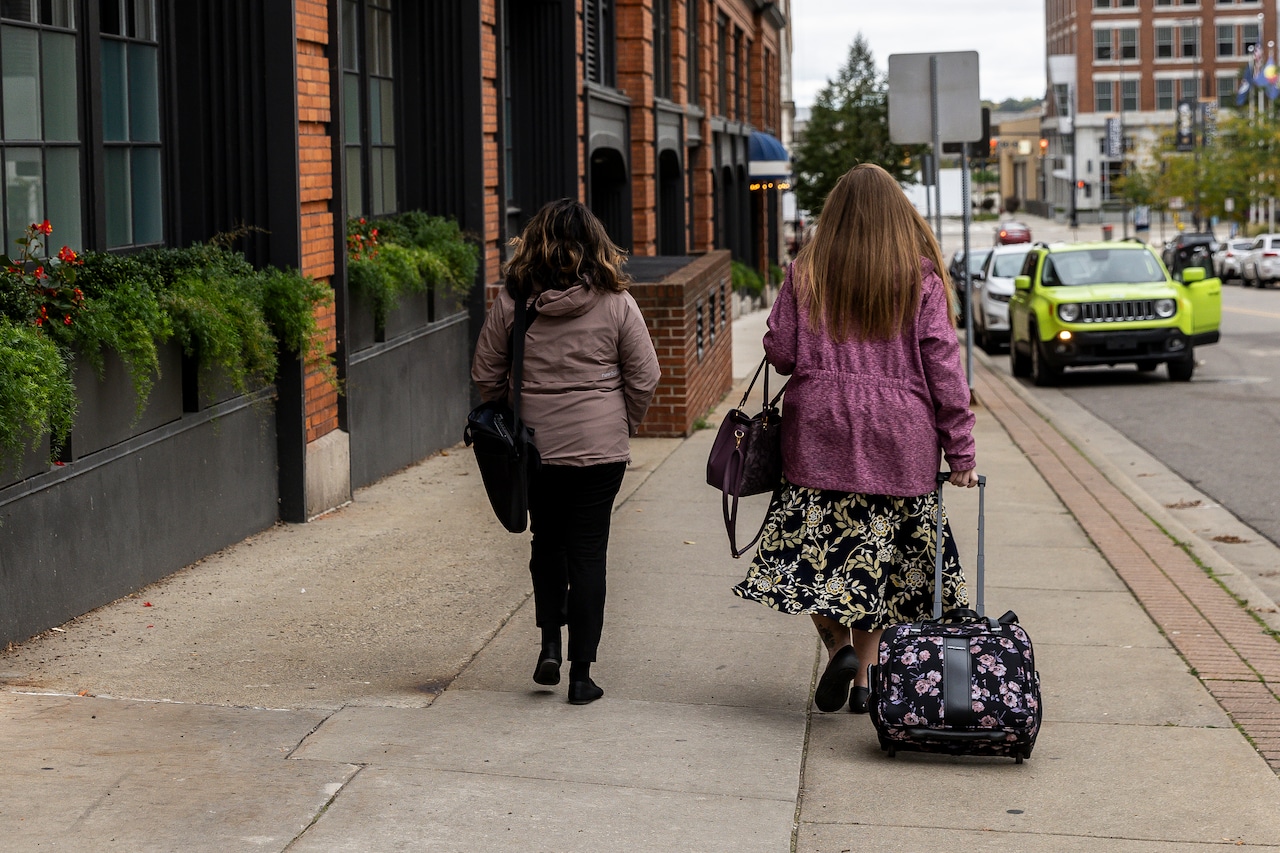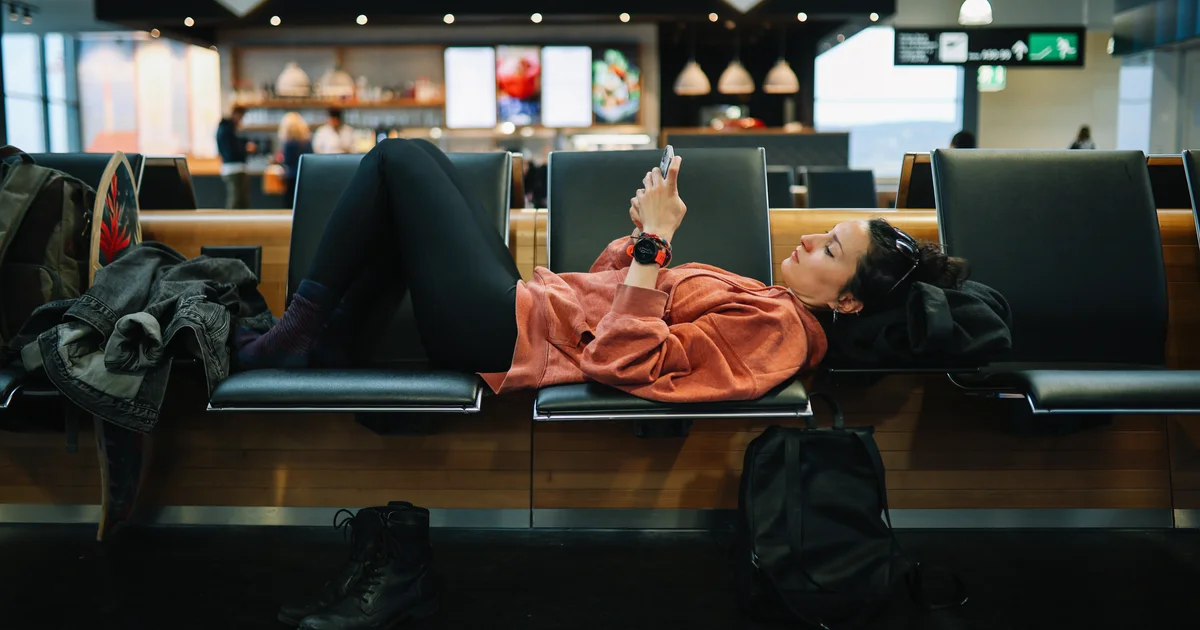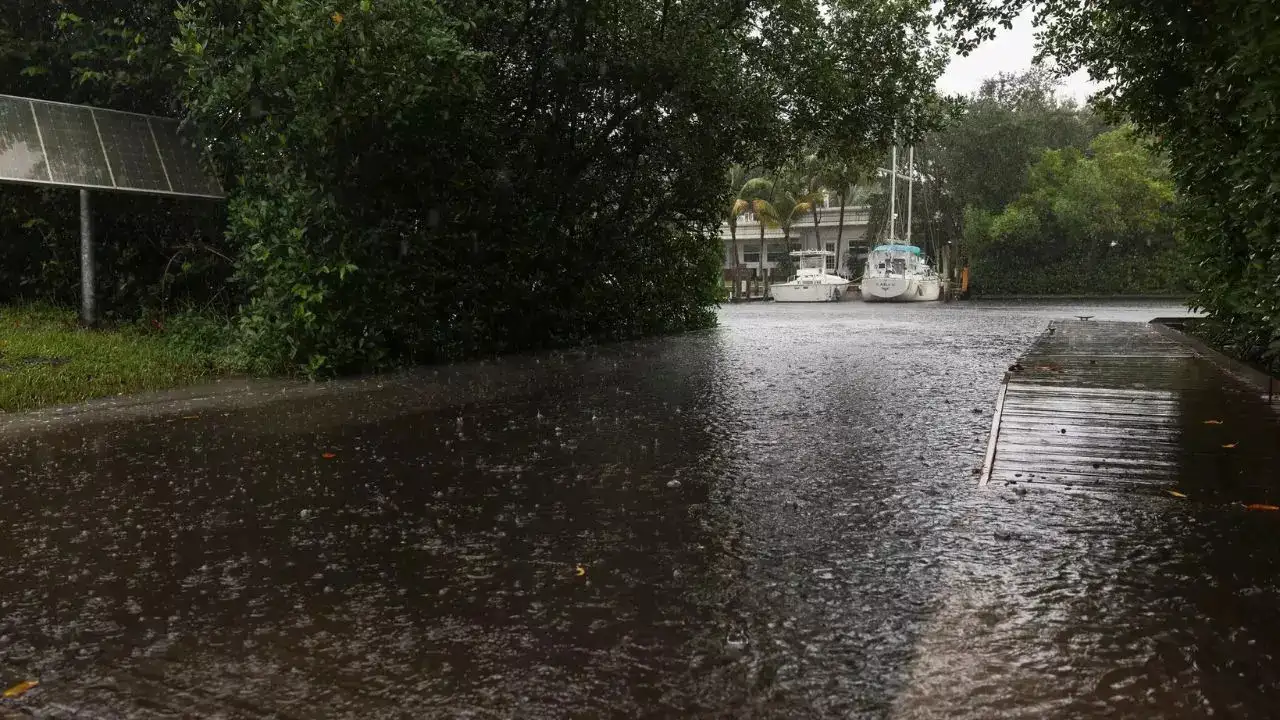Copyright M Live Michigan

GRAND RAPIDS, MI — Michael Kurley felt a tinge of sticker shock as he searched for a hotel room in downtown Grand Rapids for a wedding in early October. Several were approaching $400 a night, he said. Thankfully, Kurley, an Orlando resident who grew up near Lansing, had points available through his Hilton rewards account, giving him a big discount on a roughly $350 a night room at the upscale Canopy by Hilton at Studio Park. “I just bit the bullet,” he said. “It was a last-minute trip. We didn’t realize we were going to come. So normally, I like to book these things at least a month or two in advance. This is more like a week-and-a-half.” Kurley’s experience isn’t unique. While downtown room rates averaged $190 in 2024, according to Experience Grand Rapids, Kent County’s convention and visitors bureau, prices can rise significantly on busy travel nights. Conferences, festivals, concerts and weekend travel can shrink the number of available rooms and send rates climbing. “When demand is up, rates go up,” said Doug Small, president and CEO of Experience Grand Rapids. “If there’s a huge concert in town along with a convention, there’s less rooms to sell, so they’re going to sell them at a premium.” Adjusting prices based on demand, a strategy also used by airlines, can be an annoyance for price-conscious visitors. But hotel operators say the practice is needed to maintain profits amid rising labor, food and operating costs. “It’s no secret that costs overall have gone up, whether it’s labor, food costs, beverage costs, supplies,” said Rick Winn, president of AHC Hospitality, which owns and operates several Grand Rapids hotels, including the Amway Grand Plaza. “It forces businesses to try to maximize revenue to cover those costs. It’s as simple as that, and if you don’t do that, you’re not likely to stay in business.” Average room rates growing Average room rates downtown are increasing, though not sharply. Last year’s average daily rate, $190, was up from $186 in 2023 and $175 in 2019, according to Experience Grand Rapids. Countywide, room rates are less expensive, averaging $123 last year. The average rates do not include taxes. On top of the base rate, visitors face a state 6% sales tax, a 4% marketing assessment for Experience Grand Rapids, and Kent County’s 8% lodging tax. Kent County voters approved a ballot measure last year to increase the county’s lodging tax from 5% to 8% to fund tourism attractions such as Acrisure Amphitheater and Amway Stadium. Beyond the averages, actual rates vary widely. Factors such as each hotel’s amenities, its location, night of the week, visitor demand, and how far visitors book their room in advance shape the final price. “When we’re setting our hotel rates, we’re really measuring and monitoring demand in the market, and that can be measured a lot of ways,” said Carol Cain, vice president of sales and commercial strategy at Lodgco Hospitality, which operates 17 hotels in Michigan, Florida and Colorado. “So we look at advanced reservations, we look at how our group bookings are pacing, local event calendars.” The difference is stark when you compare rates across different nights. Recently, rooms at the Canopy by Hilton at Studio Park, which Lodgco owns, were starting at $365 with taxes included for the evening of Friday, Nov. 7, according to the hotel’s website. A week later, on Nov. 14, rooms were significantly cheaper, starting at $263. The same can be seen at other downtown hotels. Rooms were starting at $286, with tax included, for the evening of Nov. 7 at City Flats Hotel, a 48-room boutique hotel on Monroe Center Street, the hotel’s website showed. The following weekend, they started at $174 a night. Cain likens the approach to what customers find in the airline industry. “When you’re sitting in an airplane, the person next to you probably didn’t pay the same price that you did,” she said. “You’re on the same plane, you’re in basically almost the same seat, having the same experience. But you pay different pricing based on when you booked, how far out you booked, when your return flight is.” Grand Rapids remains competitive While the average room rate has climbed, prices in Grand Rapids remain competitive, officials say. To put the city’s rate into perspective, MLive requested average daily room rate data for major U.S. markets from CoStar, a data analytics firm serving the commercial real estate and hospitality sectors. Of the top 25 U.S. markets, New York had the highest average rate, $319. It was followed by Oahu, Hawaii, at $283, and Boston at $232. The Detroit market’s average rate was $124, while Chicago’s was $169. That data covers broad metro areas, not just downtowns where the priciest hotels are often clustered. Because Grand Rapids is not among the top 25 markets, MLive requested city-level data for Grand Rapids and other, smaller Michigan markets from CoStar. The data showed the average citywide rate for Grand Rapids, beyond just downtown, was $128 in 2024. By comparison, Traverse City’s rate was $180, while Kalamazoo’s was $108 and Lansing’s was $110. “We have quality properties at a reduced rate compared to certainly any of the other major cities, Chicago, Milwaukee, New York,” said Winn, the president of AHC Hospitality. “So anybody that travels the country, they’re still surprised at the deals they get in Grand Rapids.” Still, it doesn’t escape some visitors when prices climb in Grand Rapids on busy nights. Crystal Lavaute, of metro Detroit, said she and her husband, Matt, paid $376 for a room at City Flats Hotel on a recent Friday in October. While the price “feels high,” Lavaute said she and her husband paid it because they like the ambiance at the 48-room boutique hotel. Plus, they valued being within walking distance of Van Andel Arena, where they were catching an Eric Church concert later that evening. “Now that I look, I’m like, yeah, that’s a lot of money,” Lavaute said. Tying room rates to demand is far from a new practice. However, it’s been deployed in more “dramatic” ways in recent years by hotels as operating costs increased and occupancy rates fell, said Greg Denton, the director of Michigan State University’s real estate investment management program. “There’s a lot of pressure on the part of owners and managers to generate bottom line, to keep bottom line from eroding,” he said. “So it’s not out of greed to maximize profits. It’s out of necessity to maintain profits.” Nationally, several factors have contributed to lower occupancy rates, Denton said. More hotels have opened, creating more competition for travelers, and some market segments such as business travel haven’t fully rebounded from the COVID-19 pandemic. To account for those losses, operators raise rates when demand is high for sporting events, graduations and conferences, Denton said. “They’re not trying to gouge people,” he said. “They’re just trying to survive.” Michigan’s occupancy rate was 56% in 2024, down from 60% in 2019, Denton said. The optimal occupancy rate is at least 70%, he said. Occupancy rates a challenge Occupancy rates have also been a challenge in Kent County. While hotels sold a record number of rooms in 2024, generating an historic $274.1 million in revenue, the county’s occupancy rate has fallen since 2019. Countywide, the occupancy rate was 59% in 2024, down from 64% in 2019, according to Experience Grand Rapids. Downtown Grand Rapids has fared better. Its occupancy rate fell from 65% in 2019 to 64% in 2024. The decline in the occupancy rate is due to at least 22 new hotels that have opened in Kent County over that period, data show. Counting the new properties, there are now at least 90 hotels with 40 or more rooms in the county, up from 68 in 2019. That growth spread the record room sales over a larger number of hotels, resulting in a lower occupancy rate. “We just keep adding hotels,” said Ed Wilson, general manager of the Country Inn & Suites by Radisson Grand Rapids East. “If you have record growth, it’s just spreading out that pie. It isn’t necessarily making the pie taller or bigger and everybody’s getting more.” The growth in hotels has made capitalizing on increased demand with higher rates an important way for operators to keep their hotels profitable, he said. But at the same time, more hotels means more competition, so rate increases can’t be out of line with what others are charging, Wilson said. Rooms at Country Inn & Suites by Radisson Grand Rapids East, just south of Frederik Meijer Gardens & Sculpture Park, range from $135 on slow nights to $235 when demand is high, Wilson said. “If you’re charging $225 like you would on a busy weekend, that’s not gouging,” he said. “We want it to be a value for the guest or they will never come back.” At Lodgco Hospitality, rates typically grow between 3% and 5% a year, said Cain, the company’s vice president of sales. “Like most industries, we’ve seen higher costs for labor, utilities, supplies,” she said. “While those pressures really factor into our pricing, we work very hard and are very careful not to just pass that cost along to guests.” In addition to the Canopy by Hilton, Lodgco owns two other hotels in Kent County, the Fairfield Inn & Suites Grand Rapids North and the Hampton Inn & Suites Grand Rapids Downtown. Cain said Lodgco seeks to minimize rate increases by using technology to operate more efficiently and find less expensive supplies. “We try to lessen that impact just by focusing on our own hotel operations,” Cain said. “But at some point, there’s some of it we have to pass along. We’re responsible to owners, and they have to see a return on their investment.” For visitors who don’t want to pay high downtown room rates on busy nights, there are less expensive options in the suburbs. That was the case last month for Matt Noris and Ken Courtrade, who traveled to Michigan from Virginia to explore Traverse City and stop in Grand Rapids to see family and check out the final weekend of ArtPrize. The rates they found downtown were “pretty high,” about $300 and up, Norris said. Looking to pay less, they broadened their search, settling on a room for a little over $100 at the Spark by Hilton in Walker. “I wasn’t surprised,” Noris said, when asked about the downtown rates during ArtPrize. “Because it is a big event, a lot of people coming in for it. So I wasn’t shocked at all.”



